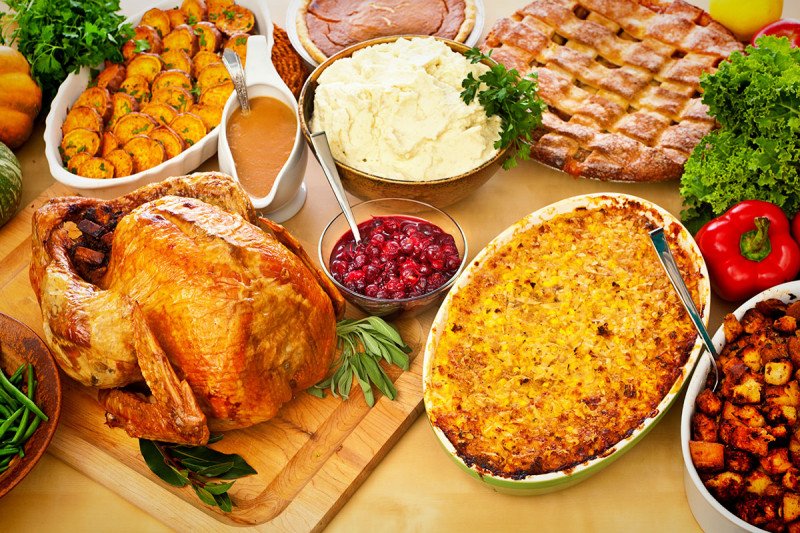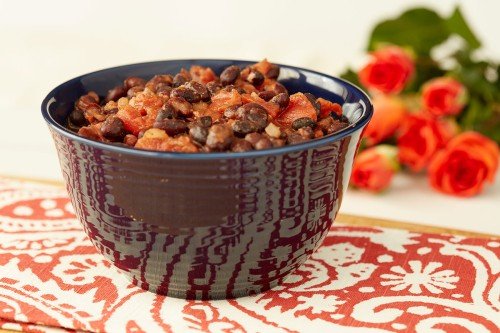
A little preparation can go a long way in showing someone you care.
Holidays are all about traditions, and food is at the center of many of them. For people with cancer, though, hearty holiday foods may be hard to enjoy because cancer treatments can sometimes cause poor appetite, nausea, and additional side effects.
But holiday hosts can stay true to their family traditions while also accounting for the needs of people in active treatment. Karla Giboyeaux and Cynthia Wong, two registered dietitians at Memorial Sloan Kettering Cancer Center, share suggestions.
Karla Giboyeaux hosts free virtual nutrition workshops each month, streaming live from the MSK Ralph Lauren Center. Join her Dec. 16 at for a holiday cooking tutorial.
Check in with your guest.
As you’re making your guest list (and checking it twice), reach out individually to anyone in treatment. “Check in with the person to see how they are doing lately, and ask if they have any menu preferences or if there are any particular foods they want to avoid,” recommends Ms. Wong. A little preparation can go a long way in showing someone you care. “Making someone part of the menu-planning process helps them feel included,” Ms. Giboyeaux says.
Don’t reinvent the wheel.
You don’t need to create a whole separate menu. “Holiday meals can be dense in nutrients and very well tolerated,” says Ms. Giboyeaux. Smaller portions may be more enjoyable for people on treatment, Ms. Wong adds, especially if they experience appetite loss. Mashed potatoes and sweet potato casseroles can get a bad reputation for being high in calories, but they’re ideal choices for people who might need to gain weight or have mouth sores. Just watch the fried foods: They may be too greasy for patients who experience indigestion.
Regardless of what’s on the menu, the important thing to keep in mind is that holiday meals are a source of comfort for everyone at the table, including those who have cancer. Guests in active treatment may not want all eyes on them and what’s on their plate.
Be flexible.
Put sauces on the side, create a fun “mocktail” for those who aren’t drinking, and have some easy nibbles on hand. Let your guests design dinner to their liking. “I like going tapas style,” Ms. Wong says, referring to the signature Spanish meal of appetizers and snacks. “It takes off some of the pressure a guest may feel to eat a lot.” You could not only serve hot dishes but also some that are room temperature or cold to account for sensitive noses and taste buds.
And while you may want to bring out your best silverware and china, sticking to disposables minimizes the spread of COVID-19 and other winter bugs like the flu. That’s especially critical for people with weakened immune systems from cancer and its treatments. Offer toothpicks for hors d’oeuvres, and designate one person to serve all guests at dinnertime. That person could also plate each dish formally, just as if you’re at a restaurant.
Make some simple and healthy swaps.
One of Ms. Giboyeaux’s favorite holiday treats is a Puerto Rican drink called coquito, which is similar to eggnog. For patients who need to reduce fat, she likes to sub reduced-fat evaporated and condensed milk in for the full-fat versions — and avoid the rum. Some patients, however, may enjoy full-fat versions, as they need to increase their food intake. Ms. Wong likes to swap meat for tofu when possible. “It takes on the flavor of whatever you’re cooking and is soft enough for people with chewing difficulties,” she says. And don’t forget to dress (your dish) for success: Vinegar and lemon are simple flavor boosters, and a quick spice mix of oregano, garlic powder, and onion powder is delicious without too much sodium. That’s important because people on treatment may experience taste changes, and salt may be hard for them to tolerate.
Foster connection.
“It’s not all about the food,” says Ms. Wong. “Some people just want to be there and connect with their friends and family.” Gathering with loved one after more than a year of pandemic restrictions is worth celebrating in its own right.






